Palmer’s Bar
This iconic workingman’s bar at 500 Cedar Ave. has a long, storied history. Some research for this page was done by Philip Reinhardt, who generously posted it on Facebook and has given me permission to use here.
I have a hard copy of an early permit card, kept by the Minneapolis Inspector of Buildings, but for some reason can’t bring the address up online. The card I have indicates that the address of the building was 500-02 Cedar Ave. It is not the first card, as it starts in 1905.
In 1886, Stanley Utter ran a confectionery at 500 Cedar Ave. This information comes from a directory listing.
On April 9, 1896, a confectionery and cigar stand were advertised for sale at this address. The ad offered the place “for sale cheap; good location, low rent.” (Minneapolis Tribune)
In April 1905 the permit card said that part of the building was a Bicycle Shop.
In October 1905 the permit card said it was an office, but see this ad from the same month:
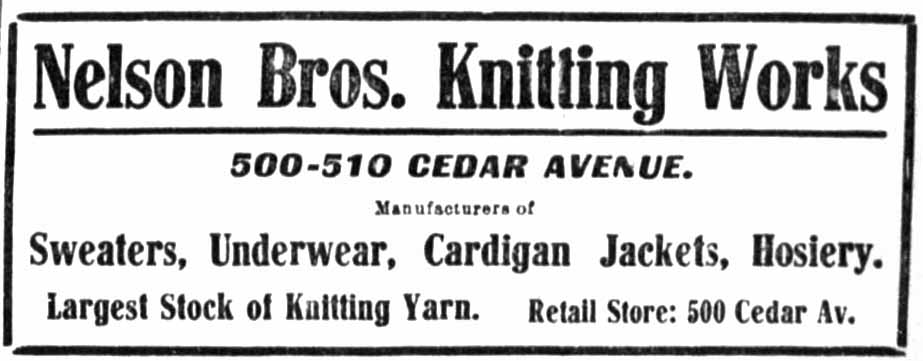
Minneapolis Tribune, October 6, 1905
SALOON
In March 1906, the building was altered and made into a saloon and flat, consistent with the permit card.
Notice in paper:
Lindquist & Noren, Bank of Commerce building, have let the contract for improvements and a new store front in the building at 500 Cedar avenue for the Minneapolis Brewing company. Boehme & Cordella, Architects. Cost, $2,500. (Minneapolis Journal, April 15, 1906)
This coincides with the notation on the permit card, which says alteration to store, with the same dollar amount.
In general, a saloon was for men only – a place to drink and spit and tell lies. It was the saloons that ticked off the women, whether it was because their men were not at home, they were spending the rent money on beer, or maybe because the women resented not being welcome.
The new saloon was a “tied” establishment, serving only products made by the Minneapolis Brewing Co., later known as Grain Belt Beer. Like many other such Grain Belt bars, a distinctive tile flooring was installed, which is still in the building today.

From Palmer’s website
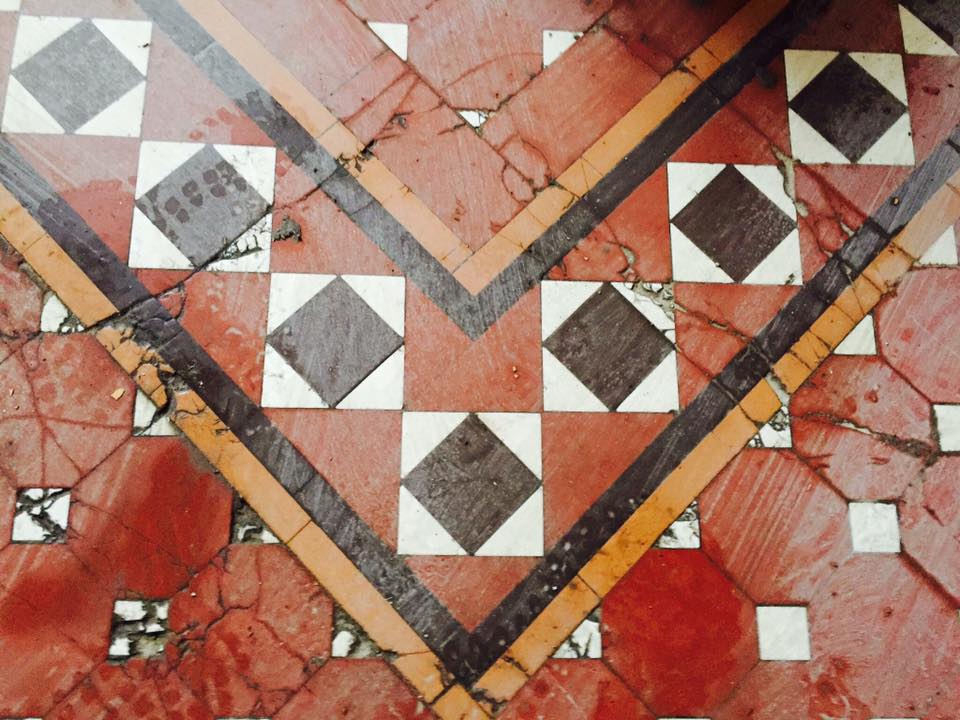
More Grain Belt Tile from the Viking Bar
You can still see the distinctive Grain Belt floor today:
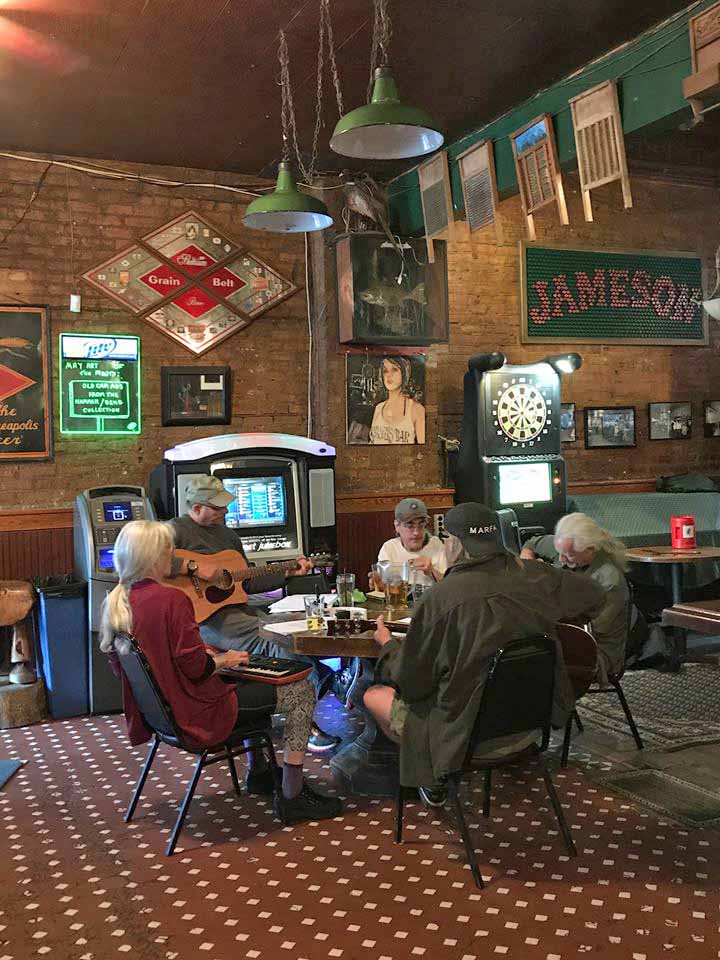
Photo courtesy Philip Reinhardt
PROHIBITION
Prohibition went into effect in January 1920. The permit card indicates that the saloon transitioned to a store/restaurant/lunchroom/cafe.
On January 26, 1926, an ad appeared for a cook, “1st class, Scandinavian woman preferred. Also dishwasher.” (Minneapolis Tribune)
In 1932 the restaurant was for sale: “fully equipped with counter, stools, booths, $600 cash.” (Minneapolis Tribune, February 7, 1932)
BACK IN BUSINESS – CARL’S BAR
Prohibition ended when beer was legalized on April 7, 1933. Each municipality handled hard liquor licenses as they saw fit. The first places were generally known as taverns, and this time women were welcome. The permit card shows that a permit to install plumbing for a bar was pulled on April 20, 1934.
One day in the 2010s, a woman came to Palmer’s to celebrate her 100th birthday. She brought photographs of the bar from the 1930s when her father had owned it; at the time it was called Carl’s Bar. (Star Tribune, September 21, 2015 – obituary of Keith Bergy by Natalie Daher) The following photos are from the bar’s website, and are the best I’ve seen of a 1930s tavern/bar.
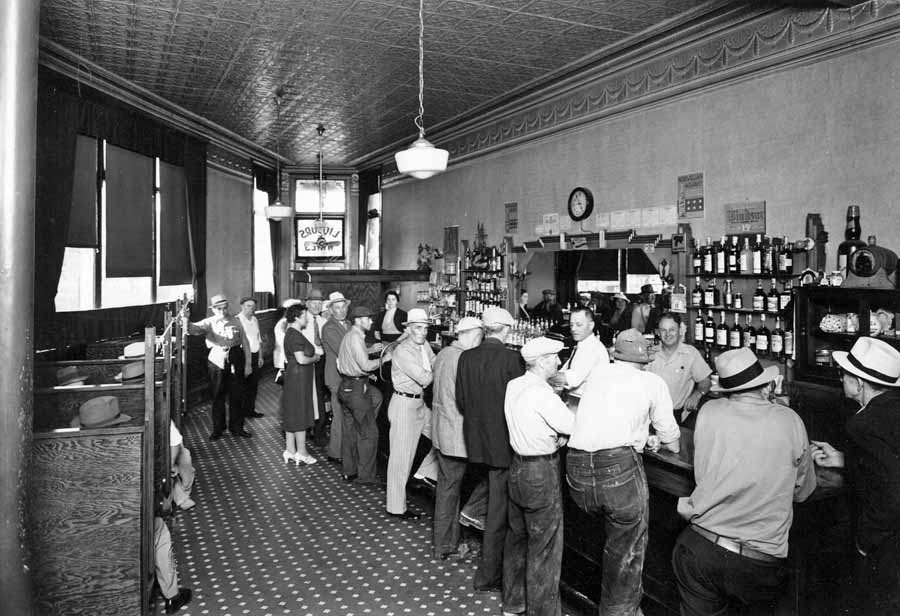
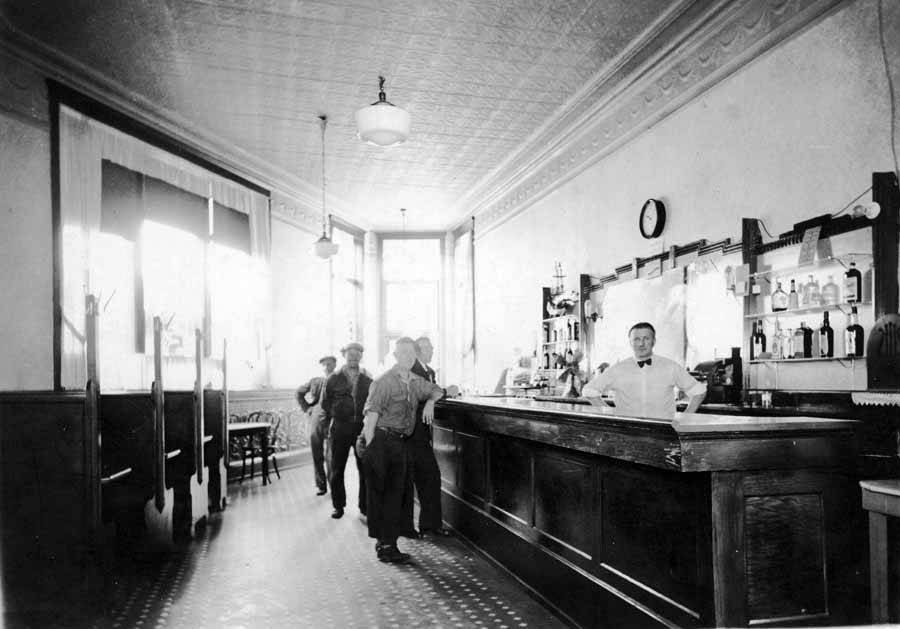
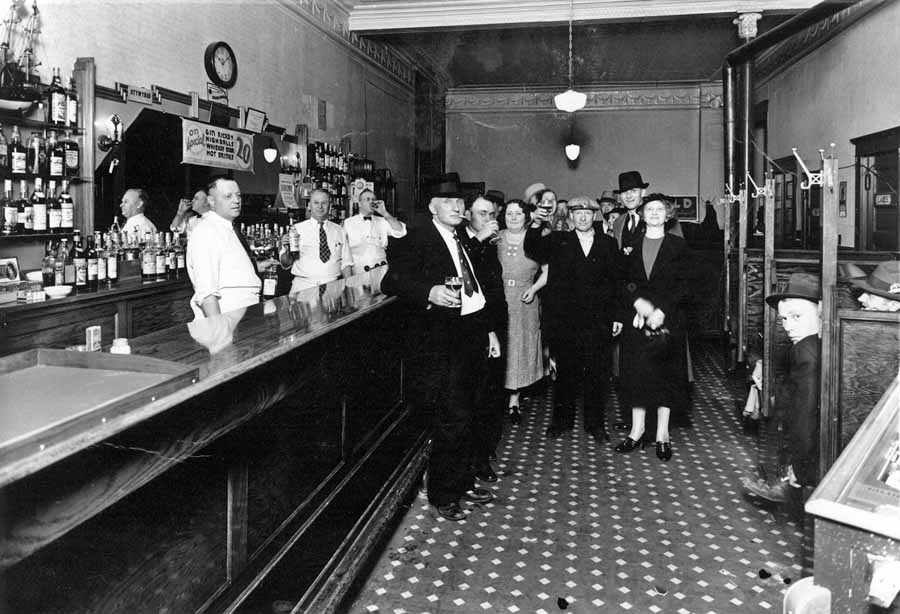
BOOTS NELSON’S
On December 1, 1947, a news item entitled “Stickup Man Asks $55 Question, Wins” tells us that the place was called Boots Nelson’s Bar.
As Elmer Nelson, manager of the bar, left the place at about 3 am, a stickup man accosted him and asked, “How much money have you got?” Nelson said he had $55. The holdup man warned, “That better be what you give me.” It was. (Minneapolis Tribune)
A 1948 article revealed that the former owners of Boots Nelson’s Bar were Elmer N. (Boots) Nelson and Mrs. Leonilla L. Berman. Mrs. Berman was the wife of Ockie Berman, “Floor Man” at the Variety Bar, 830 Hennepin Ave. Nelson said they had sold out to someone named Palmer – he didn’t remember his first name. The liquor license division at city hall reported a transfer of the license for Boots Nelson’s was being made to Mrs. Virginia C. Palmer. She formerly owned a tavern at 2519 E. 25th Street. (A commercial building that was built in 1966 sits there now.) (Minneapolis Tribune, July 24, 1948)
PALMER’S
Determining when the bar actually became known as Palmer’s is no easy task.
It was still Boots’ in December 1947.
Boots sold out to Palmer before July 1948. Mr. Palmer appears to be Henry Edward “Bud” Palmer (11/6/1897 to 1/13/1964).
An article on Adam Folta, an immigrant from Czechoslovakia, says that he had owned the bar for 27 years but doesn’t say which 27 years. It does say that in 1988 he’d been retired for 14 years, which means he retired in 1974. 1974 minus 27 years means he bought the bar in 1947. (Minneapolis Tribune, June 26, 1988)
An article from 2015 says that it’s been Palmer’s since 1950.
“Quiet Customer Gets a Beer, Pulls Gun and Takes $200.”
Seems a tall man came in and sat on a bar stool and ordered a beer. After bartender Melvin Swanson served him, the man pulled out a .45 automatic, pointed it at Swanson, and said “Do what I tell you or I’ll plug you.” Swanson emptied two cash registers, giving the man $200 in paper money. The robber got the last word, saying “Now you can call the cops” as he fled. Customers never saw the gun and thought the bartender was just making change. (Minneapolis Tribune, August 4, 1954)
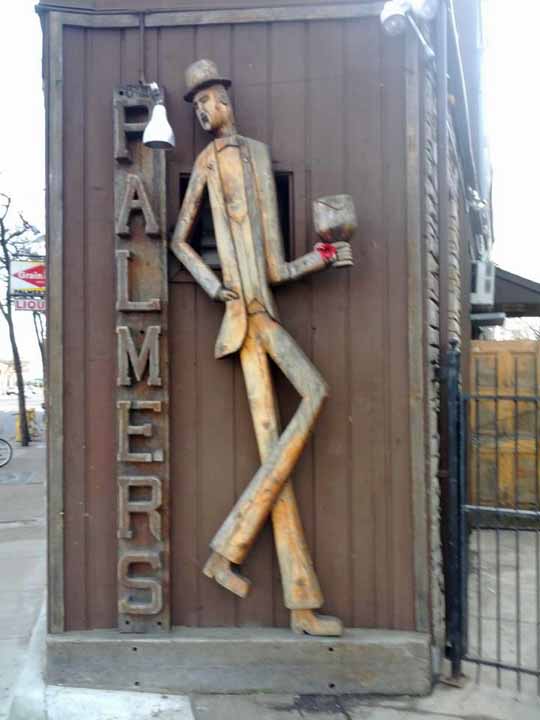
Who is this man?
“Coughing Victim Injured in Fall”
Einar Johnson, about 64, 1100 S. Eighth Street, was taken to General hospital in critical condition after falling on a stone floor at 500 Cedar avenue. He suffered head injuries when falling during a coughing spell, police said. (Minneapolis Tribune, December 26, 1956)
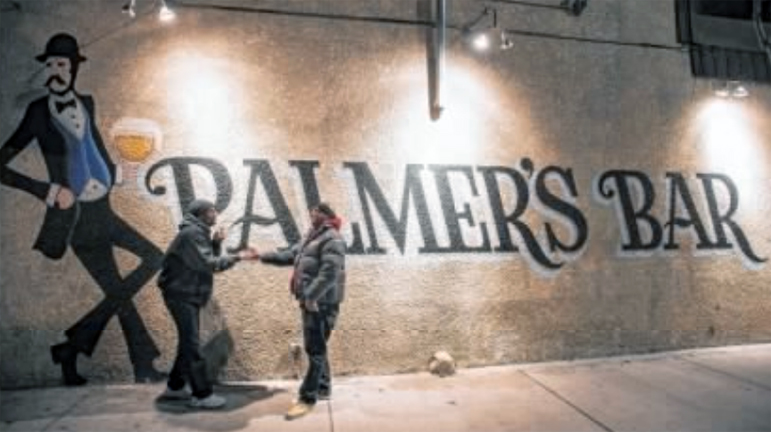
Minneapolis Star Tribune, December 31, 2015. Photo by Aaron Lavinsky
In 1973, former bootlegger Don Carmichael was the proprietor of Palmer’s and anticipated a boom in the Cedar-Riverside area. But business was so bad by December, he had to lay off his bartender. “Who do I need? A bartender? I can drink as much as he can.” (Minneapolis Tribune, December 9, 1973)
Adam Folta retired in 1974 and sold the bar to his son Roger. (Minneapolis Tribune, June 26, 1988) Roger is said to have owned it from 1975 to 1996.
Florence Johnstone was a co-owner since 1981.
Two men were stabbed outside Palmer’s bar on September 16, 1987, and treated at Hennepin County Medical Center. (Minneapolis Tribune, September 17, 1987)
For the movie Old Explorers, first-time director Bill Pohlad transformed Palmer’s into a 19th Century British pub. The one review of this film on imdb.com says it has a “bargain basement look and feel to it.” Ouch. Pohlad was criticized for using his wealthy father’s money to buy his way into Hollywood. (Minneapolis Tribune, August 31, 1989)
Minneapolis’ record-breaking 62nd homicide of 1991 occurred during a fight outside of Palmer’s Bar on December 30, 1991. The long-standing dispute may have been about a woman. (Minneapolis Tribune, December 31, 1991)
A stolen wallet led to a murder-suicide on November 3, 1995. (Minneapolis Tribune, November 5, 1995) The area was getting more and more dangerous, and stores were going out of business or closing early.
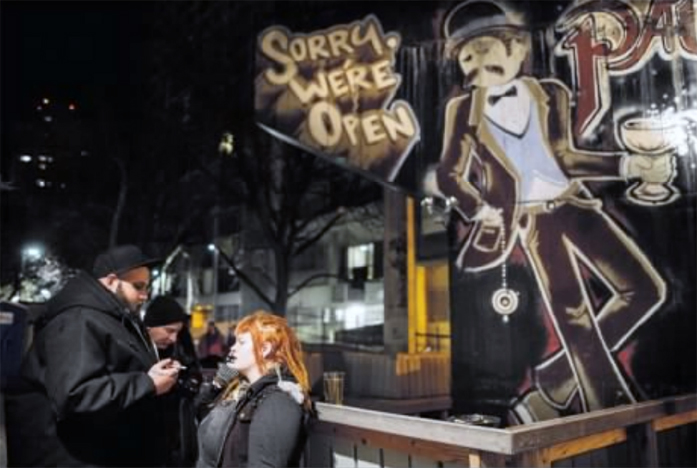
Minneapolis Star Tribune, December 31, 2015. Photo by Aaron Lavinsky
The bar was purchased by Keith Berg and his wife, Lisa Hammer in 2001. Berg had previously been a bartender there. Originally from North Mankato, Minnesota, Berg moved to Minneapolis in 1977 to attend the U of M. (Minneapolis Tribune, September 22, 2015)
A man was found dead in the bar’s parking lot on May 16, 2002. (Minneapolis Tribune, May 17, 2002)
The French-Norwegian film Factotum was filmed partly in Palmer’s Bar in 2005.
Another dispute led to yet another deadly shooting in front of the bar on June 3, 2007. (Minneapolis Tribune, June 5, 2007)
Palmer’s was named one of the best bars in America by Esquire magazine in 2014. (Minneapolis Tribune, September 22, 2015)
September 2015: Owner Keith Berg died unexpectedly at the age of 56. More than 500 people attended his funeral. His widow, Lisa Hammer, continued to be a co-owner of the property.
In May 2018, co-owner Lisa Hammer sold her ownership share to Tony Zaccardi, who spent many years as a part-time bartender, and was the bass player in the bands Romantica, Eleganza!, and Coming Collapse.
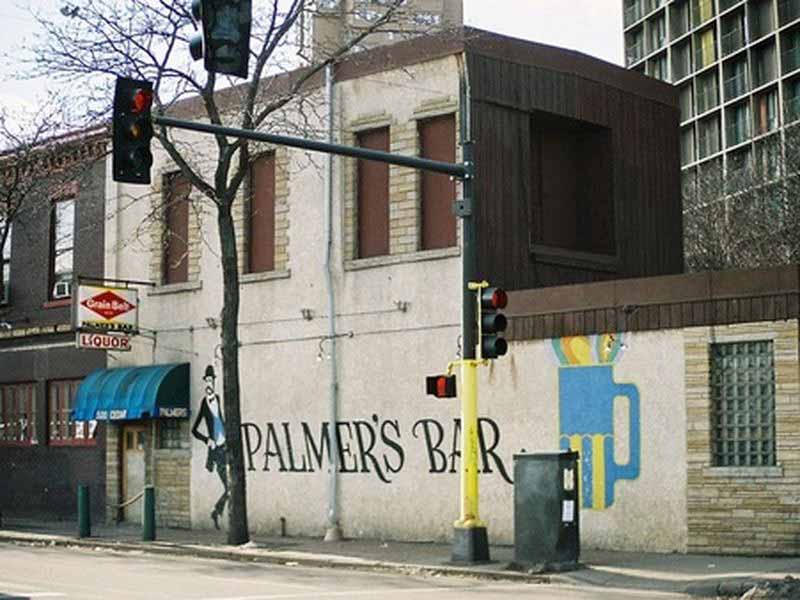
GOD BLESS YOU, PALMER’S BAR
On July 25, 2014, the City Pages published a love story to Palmer’s Bar written by Zach McCormick. Mentioning the rash of murders in the late 1980s and early 1990s, McCormick said that Palmer’s “didn’t even blink.” Here are some excerpts:
Palmer’s was a skid-row fishtank during the dark ages of Cedar Riverside in the 1950s. In the ’60s and ’70s, it became a hub for the beatnik and hippie movements, drawing in bohemians and ivory-tower wannabes from the nearby universities with a burgeoning folk and blues community. One of Bob Dylan’s most important mentors, “Spider” John Koerner, made the bar his stomping grounds and is still playing the annual summer festival, Palmfest.
His partner in crime, Dave Ray, showed Bonnie Raitt the ropes around there during the early 1970s with the help of blues legend Willie Murphy. Piano player “Cornbread” Harris (father to Jimmy Jam) has called Palmer’s home since he played on “Hi Yo Silver,” the first rock ‘n’ roll single to be recorded in Minnesota, back in 1955.
FROM PALMER’S WEBSITE
Palmer’s was a second home to dock, rail and lumber workers, boat crews, immigrants, gadflies and transients.
Rumor has it there was a tunnel connecting Palmer’s to the 5 Corners Saloon.
Palmer’s is still a proud second home (community center with a kick) to many a working Twin Cities man and woman, including: students, nurses, cabbies, hippies & hipsters, musicians, anarchists, poets and artists, as well as a rare breed of professional barflies
Palmer’s has been described as: A church for down and outers and those who romanticize them, a rare place where high and low rub elbows – bums and poets, thieves and slumming celebrities. It’s a place that wears its history proudly.
Palmer’s is a destination where you can occasionally find a pick-up Scrabble game, a free-form Hippenanny (every Wednesday around 5) and where you can always find a familiar face, an interesting conversation and the best drink values in the Twin Cities!
